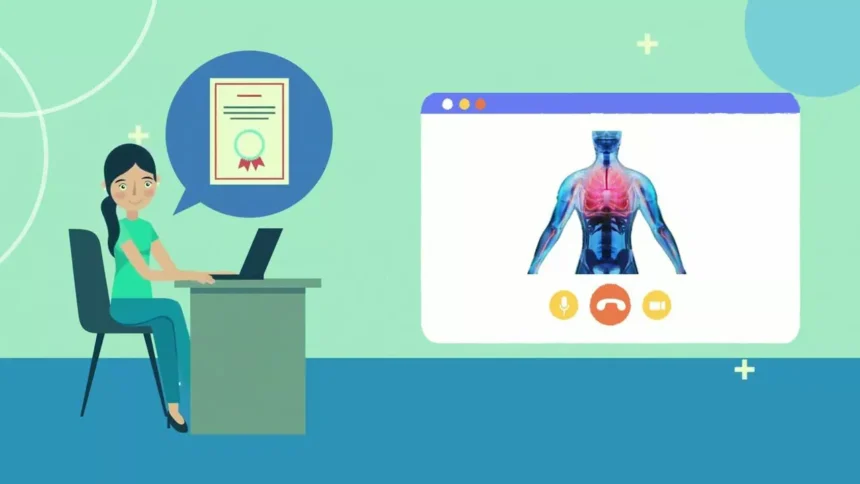The medical field is getting updated constantly. Medical professionals must stay updated to administer timely skills. Advanced cardiovascular life support (ACLS) and basic life support (BLS) certifications ensure that medical personnel can effectively handle emergencies confidently and provide the best care to patients.
Keep reading to understand the differences between BLS and ACLS while highlighting their importance and the emerging trends influencing the essential medical certifications. Know why you must seek an ACLS certification.
What is BLS?
Basic life support is a training program for healthcare professionals. It covers CPR administration for infants and adults and addresses choking incidents. It also teaches an automated external defibrillator (AED).
What is BLS certification?
BLS certification ensures that healthcare professionals need the necessary knowledge and skills to perform procedures effectively. It involves practical and theoretical knowledge and assessment. Renew it timely and ensure it aligns well with the updated guidelines.
Who is BLS right for?
BLS is a crucial certification for several healthcare professionals, including paramedics, nurses, and emergency medical technicians. It is beneficial for healthcare roles, including medical assistants and physical therapists who need to offer effective interventions.
How long does the BLS certification last?
BLS certification is valid for two years. You must renew timely. This includes attending a refresher course while demonstrating their continued proficiency in BLS skills.
What is ACLS?
ACLS is a comprehensive training program that equips healthcare professionals with the skills and knowledge to manage acute cardiovascular emergencies. This includes stroke and cardiac arrest and uses life-saving interventions.
What is ACLS certification?
ACLS certification is ideal for healthcare professionals who complete a certification course. It demonstrates proficiency in airway management and teaches team dynamics. The course teaches vital skills needed to manage the first few minutes of a cardiac arrest.
Who must learn ACLS?
The course is ideal for healthcare professionals, including nurses, physicians, and respiratory therapists, involved in offering cardiovascular care. The training enhances clinical decision-making skills and ensures interventions to improve the outcomes of patients during critical scenarios.
How long does the ACLS certification last?
ACLS certification lasts for two years, after which healthcare professionals need to complete a recertification course to maintain their credentials. This keeps them updated with the latest evidence-based practices and guidelines.
What are the differences between BLS and ACLS?
| Aspect | BLS | ACLS |
| Focus | Basic life-saving skills for laypersons | Advanced techniques for healthcare professionals |
| Certification level | Entry-level | Advanced |
| Participants | Lifeguards, laypersons, daycare workers | Doctors and healthcare providers |
| Skills covered | CPR, AED use, relief of choking | CPR, advanced airway management |
| Training environment | Classroom or online | Classroom, simulation labs |
| Certification period | Typically two years | Typically two years |
| Common settings | Workplaces, public places | Clinics, hospitals, emergency settings |
| Targeted conditions | Basic cardiac arrest, choking | Advanced cardiac arrest, acute cardiac conditions |
| Recommended for | Non-medical personnel | Medical personnel |
BLS and ACLS differ in complexity and scope. BLS focuses on basic life-saving techniques, including AED use and CPR. It explains the techniques in depth, including advanced cardiovascular life support, complex resuscitation algorithms, etc.
Certification differences between BLS and ACLS lie in the prerequisites and the depth of training. The certification is ideal for a broader audience that includes laypersons.
On the other hand, ACLS is ideal for healthcare professionals involved in emergency cardiovascular care.
Comparison analysis:
- Target audience: BLS is ideal for both laypersons and healthcare professionals. ACLS is for healthcare providers with patient care responsibilities, including nurses and physicians.
- Training focus: While BLS covers basic life-saving skills such as AED use and CPR, ACLS addresses advanced life-support techniques such as resuscitation ACLS algorithms.
- Pre-course requirements: BLS does not have any prerequisites. ACLS needs candidates to possess a valid certification and an understanding of ECG interpretation.
- Course duration: BLS courses are shorter. You can complete it easily. On the other hand, ACLS courses are more comprehensive and take 10–20 hours to complete.
- Team dynamics: BLS emphasizes the importance of teamwork. On the other hand, ACLS prioritizes effective team dynamics, leadership, and communication during critical situations.
It is crucial to understand the differences among healthcare professionals to ascertain the ideal certification that best suits their role.
Conclusion
BLS and ACLS certifications play a crucial role in equipping individuals with the necessary skills to save lives during emergencies. The differences between BLS and ACLS vary, especially in terms of target audience, scope, and training requirements. The key differences, as enlisted above, enable individuals to make informed decisions and help provide improved care.






